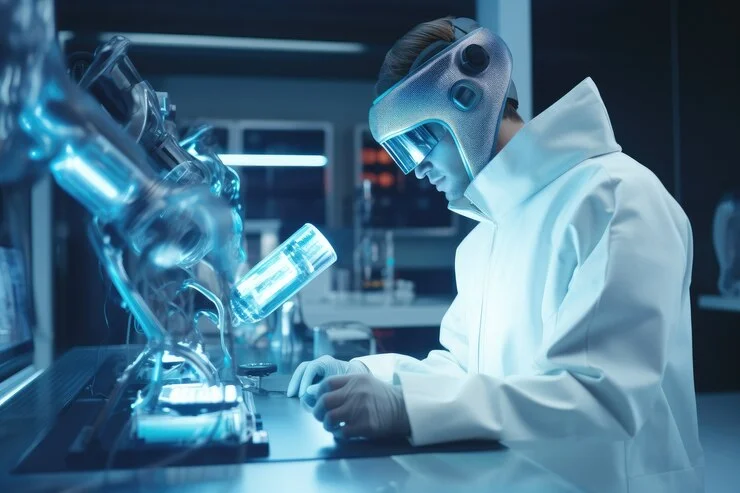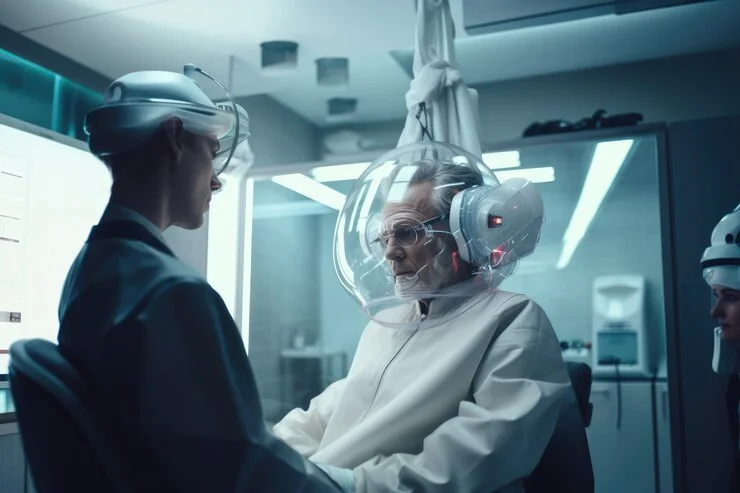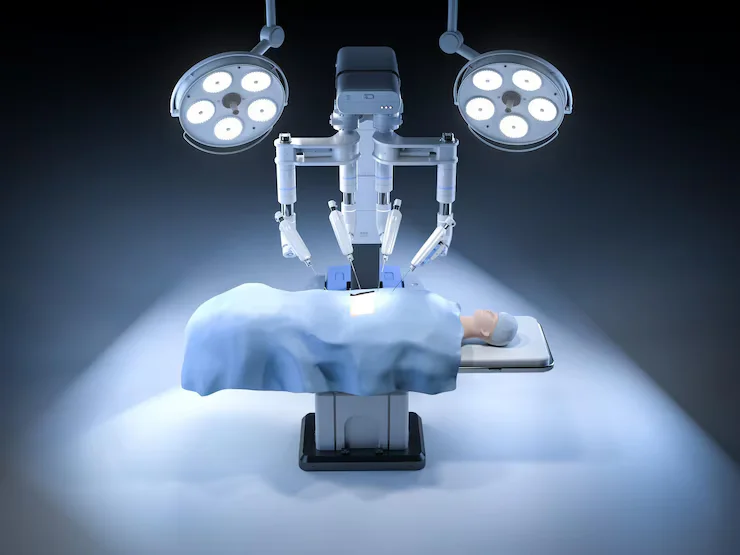-
BP Poddar Hospital
BP Poddar Hospital

Discover 10 essential facts about robotic cancer surgery and how it’s revolutionizing oncology. Learn from experts and explore this advanced treatment method.

Cancer treatment has come a long way over the years, with advanced technologies providing better treatment outcomes and improving patients’ quality of life. One such breakthrough is Robotic Cancer Surgery. It has emerged as a transformative technique in the field of surgical oncology, offering a range of benefits for patients, including less invasive procedures and quicker recovery times.
Here are 10 important facts about robotic surgery that every cancer patient should know:
Robotic surgery involves the use of robotic systems to assist surgeons in performing precise and minimally invasive procedures. The robotic system consists of a console, robotic arms, and high-definition cameras. The surgeon operates the robotic system from a console, and the robot assists with the precision and stability of the movements.
In the case of Robotic Cancer Surgery, the surgeon can perform complex cancer surgeries with enhanced accuracy, allowing them to target and remove tumors with minimal damage to surrounding tissues.
One of the major advantages of Robotic Cancer Surgery is the enhanced precision it offers. The robotic system has a high-definition 3D camera, which provides surgeons with an excellent view of the surgical site. This high level of detail allows for the removal of tumors with minimal disruption to nearby healthy tissues, leading to better outcomes.
The robotic arms also allow for more dexterous movements, which is crucial in delicate areas such as the lungs, liver, pancreas, or prostate, where precision is essential.
Unlike traditional open surgeries that require large incisions, robotic surgery involves small, strategic incisions. Surgeons insert tiny instruments through these incisions to carry out the procedure, which results in minimal disruption to the body.
The minimally invasive nature of robotic surgery offers several benefits:
For cancer patients, this can be particularly advantageous as it allows for quicker return to normal activities while reducing the physical and emotional strain of recovery.
Compared to traditional open surgery, Robotic Cancer Surgery typically results in faster recovery times. This is because smaller incisions cause less trauma to the body, leading to reduced pain, swelling, and scarring.
Many patients find that they can resume their daily activities more quickly after robotic surgery. For cancer patients, this can also help with mental well-being, as a quicker recovery means less disruption to their lives during an already challenging time.
The precision and minimally invasive nature of Robotic Cancer Surgery helps reduce the risk of complications such as infections, excessive bleeding, and damage to surrounding tissues. Surgeons have better control over their instruments and the procedure, leading to fewer errors.
This is particularly important for cancer patients, as the body may be more vulnerable due to weakened immune systems, both from the cancer itself and treatments like chemotherapy.
One of the key features of Robotic Cancer Surgery is the high-definition 3D visualization provided to surgeons. The robotic system uses high-resolution cameras that offer a detailed view of the surgical area, even in hard-to-reach places.
This enhanced view helps surgeons make more accurate incisions, ensuring that cancerous tissues are removed entirely while preserving healthy tissues. It can also help with decision-making during the surgery, improving overall outcomes.
After surgery, cancer patients often experience pain as a result of the procedure. Robotic surgery’s smaller incisions and minimized tissue damage mean that patients generally experience less pain after surgery.
This can reduce the need for strong pain medications and help patients recover more quickly, enabling them to focus on their cancer treatment and rehabilitation.
Due to the precision and reduced trauma associated with Robotic Cancer Surgery, many patients see improved outcomes. The ability to remove tumors more effectively, minimize complications, and recover more rapidly increases the likelihood of successful treatment.
Furthermore, since robotic surgery often allows for more comprehensive tumor removal, the chances of recurrence may be reduced.
While Robotic Cancer Surgery offers many advantages, it is not suitable for all types of cancer. Factors such as the location, size, and type of the tumor, as well as the patient’s overall health, may influence whether robotic surgery is an appropriate option.
For some patients, traditional open surgery or other treatments like radiation or chemotherapy may be recommended. A detailed evaluation by an experienced surgical oncologist is essential to determine the best course of treatment.
Robotic surgery requires specialized training and expertise. Surgeons who perform robotic cancer surgery must undergo extensive training to master the robotic system and the techniques involved.
Because the technology is still evolving, it is important for patients to seek out experienced and well-trained surgical oncologists who are familiar with the latest advancements in robotic surgery.

Q1: How long will I need to stay in the hospital after robotic cancer surgery?
A: Most patients can go home the same day or after a brief hospital stay, usually within 1-2 days. This is much shorter than traditional surgery, where patients may need to stay in the hospital for several days or even weeks.
Q2: How long does robotic cancer surgery take?
A: The duration of the procedure depends on the complexity of the surgery and the type of cancer being treated. However, robotic surgeries are generally quicker than traditional open surgeries due to their precision and efficiency.
Q3: Will I experience a lot of pain after robotic cancer surgery?
A: Because of the minimally invasive nature of robotic surgery, most patients report significantly less pain compared to open surgery. Pain management strategies will be discussed with you to ensure comfort during recovery.
Q4: How can I find the best surgical oncologist for robotic cancer surgery?
A: It’s essential to look for a surgical oncologist who is highly experienced with robotic surgery techniques. You should seek a professional with a track record of successful robotic cancer surgeries and a reputation for offering compassionate care.
Robotic Cancer Surgery is transforming the landscape of cancer treatment, offering numerous benefits such as enhanced precision, quicker recovery times, and fewer complications. While not all cancers can be treated with robotic surgery, it has become an important tool in the fight against cancer, providing patients with an opportunity for better outcomes and a higher quality of life.
For cancer patients considering robotic surgery, it is essential to consult with the best surgical oncologist in Kolkata who can assess your individual situation and determine if robotic surgery is right for you.

January 30, 2025

January 29, 2025

January 28, 2025